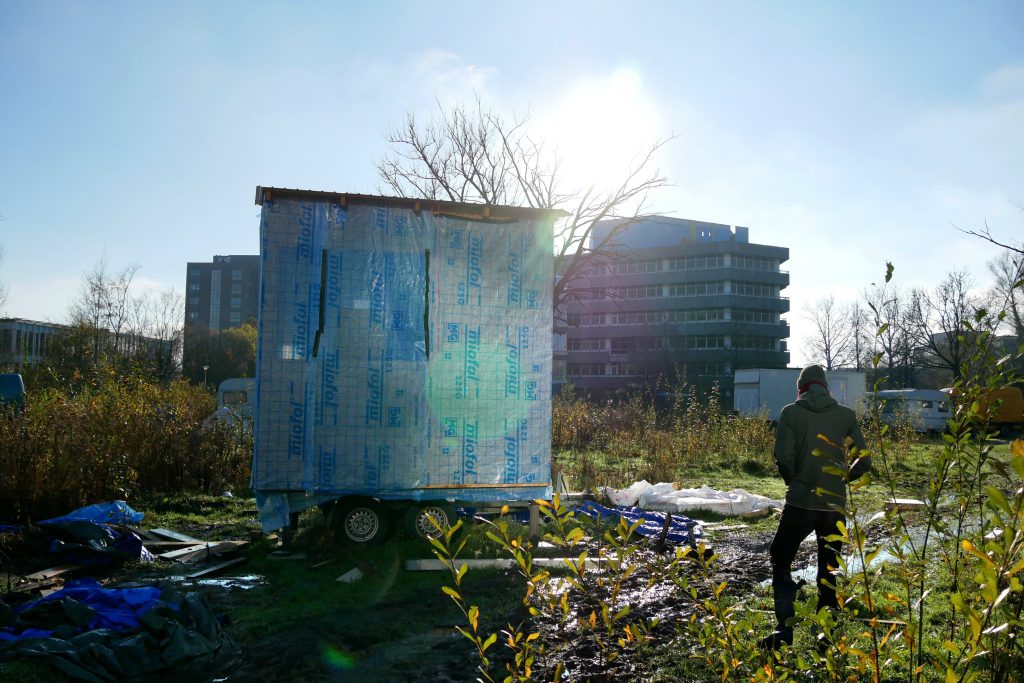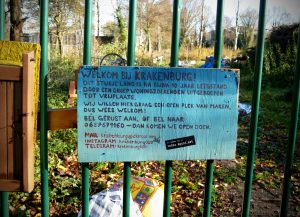
During Ad Valvas’ first visit in May, the sun was shining and the residents wore shorts. This time, it is grey and cold at the compound in the Kronenburg area, renamed Krakenburg by its occupants. After a soaking wet November, there are puddles of water all over the property. “I was afraid we would have a pond here until summer, but fortunately, the water is subsiding again”, says resident Melle at the entrance. He and two fellow squatters are busy loading muddy furniture and mattresses onto a trailer. The violent weather has caused their storage tent to collapse, rendering many donated items unusable. “That includes items that we got from VU students”, he says.

Do it yourself
Melle permanently lives with several dozen others – including some VU students – on the property. Most live in a camper or caravan, like my guide, but there is also someone living in a bright yellow garden shed. Another resident is building a tiny house. “That shows that we don’t want to leave here”, Melle says.
As he leads me along muddy paths and soggy turf, the sun suddenly begins to shine, making the grounds seem a little less dull. Through a mini bamboo forest, we arrive at a self-built wooden house that serves as a communal kitchen. It’s a cluttered but homey space of about twenty square meters with a stove, sink, dining table, sofa and the community’s latest asset: an antique wood stove. There is a climate march poster on the wall, belongings are scattered everywhere, and the walls are of an oddly shiny material. “People think it looks like a spaceship. Or a refrigerator”, Melle laughs. “We had bought wallpaper to dress it up, but returned it. It suits us better anyway, this do-it-yourself type of style. The windows, for example, are made from old doors.”
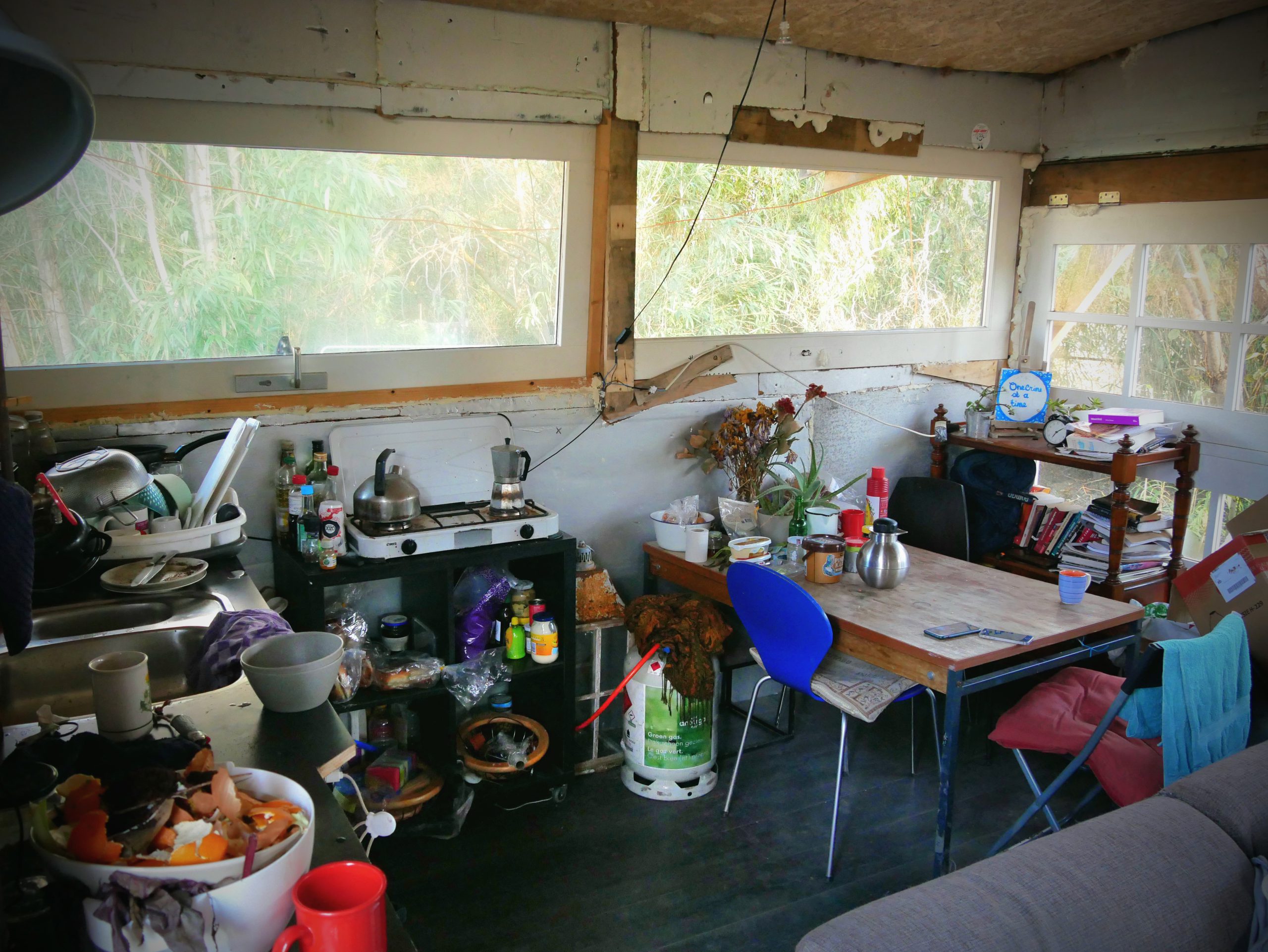
More than just housing
With their campers and caravans, the residents are ready for the winter. Because of the cold, no one sleeps in a tent anymore. Thanks to the insulating panels and insulation foam, the kitchen is also winter-ready. Yet, Krakenburg stands for more than a place to live, explains Melle, who studied international relations and now works for an NGO. “It is of course a protest against the fact that the construction of new houses is not allowed here due to aircraft noise. But it goes beyond that. We want to show that there is a different way of living. This is a place where we are in touch with each other, the neighbourhood and nature.”
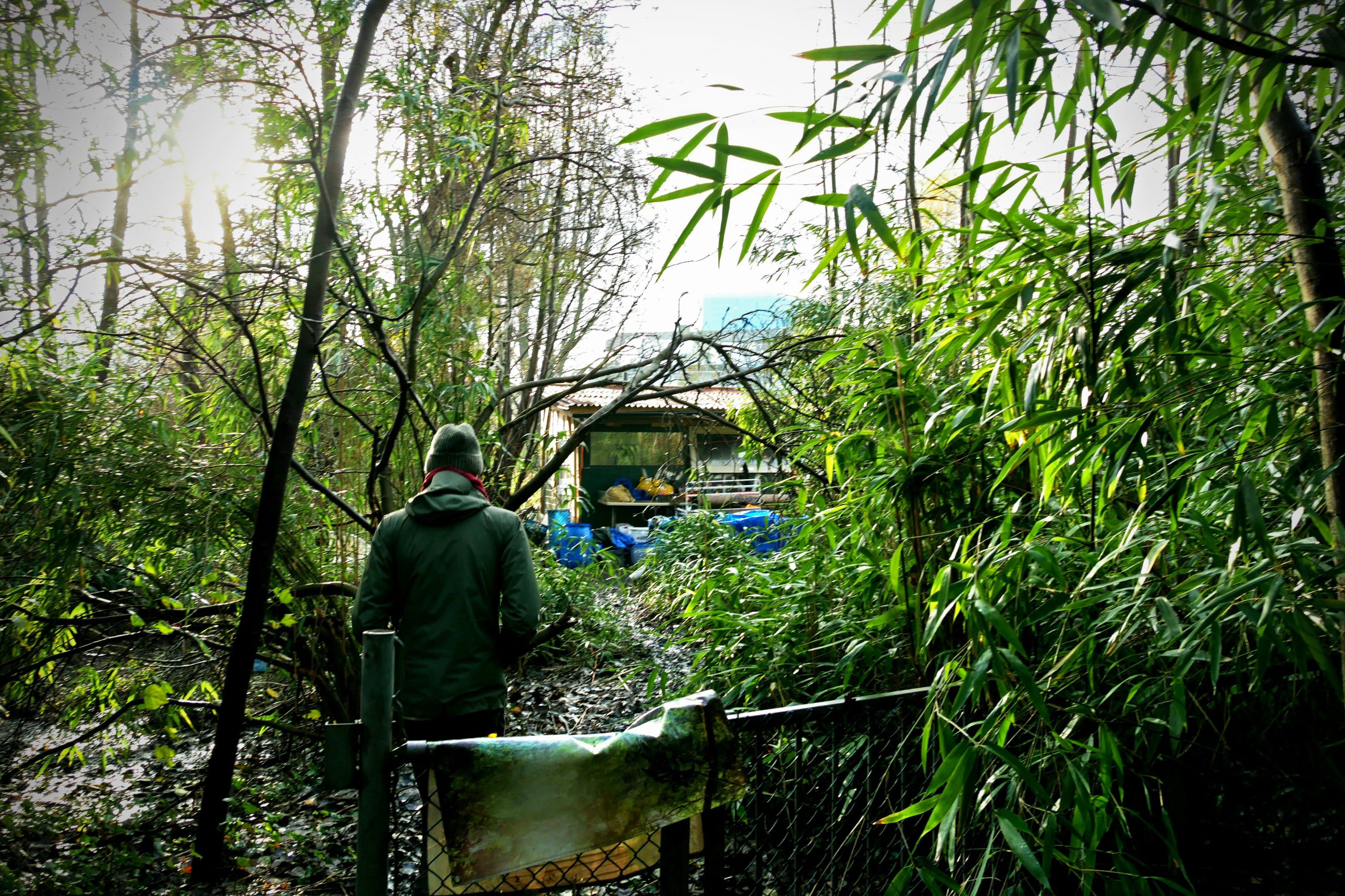
Breaking social bubbles
The residents have plenty of plans for socializing with the neighbourhood. For example, Melle mentions a community garden (“that would be really cool”) and a communal kitchen where people can help cook and where the people of Krakenburg can provide food for neighbours with a tight budget. “Unlike gentrified neighbourhoods, where space and facilities are taken away from the original residents, we want to add something. The feeling of solidarity with the neighbourhood you live in is very important. For example, we hope to get in touch with students from the neighbourhood and the Ukrainian refugees who live just down the road”, says Melle, who has to raise his voice because of a plane flying overhead.
“By taking matters into your own hands and taking care of yourself and others, you not only learn a lot about yourself but also about how society works. By doing so, we can break through the social bubbles we are increasingly getting into and the polarization it results in.”
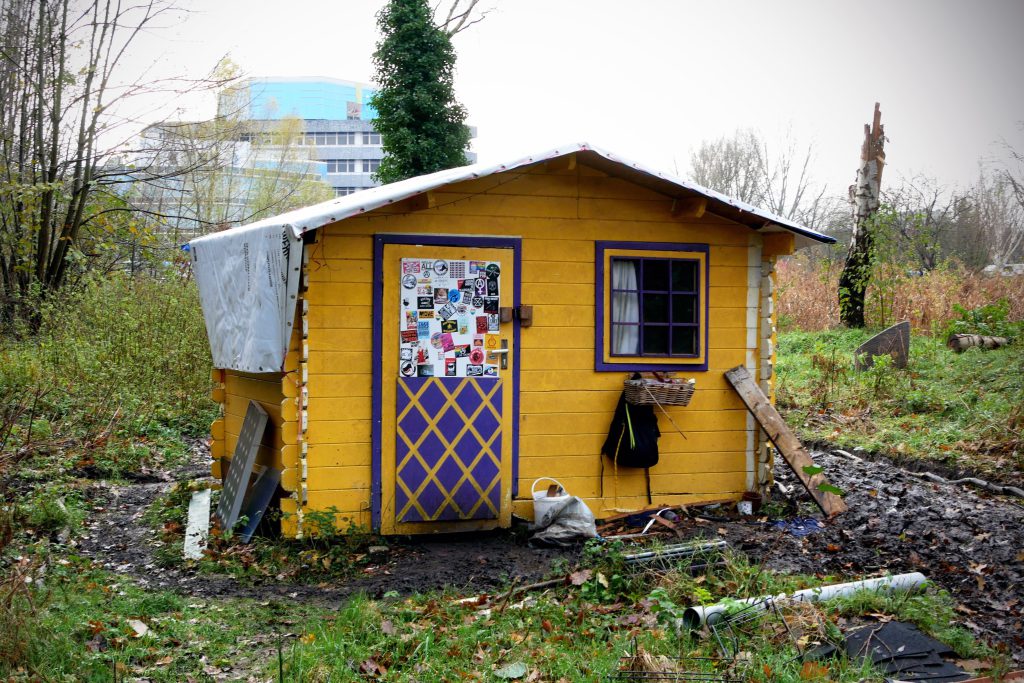
Holding up a mirror
The residents of Krakenburg are aiming for more connection in society, something Melle believes the Netherlands is sorely lacking right now. Among other things, he refers to the election results, against which Krakenburg organized a demonstration on Dam Square. “That drew 2,000 people, which was pretty cool. We also want to be a hub for political expression and activism, from which new initiatives can emerge.”
According to Melle, there are multiple ways of living and the squatters do not necessarily argue that everyone should live like them. “But we do try to point out the problem by living so radically. We hold a mirror up to society by showing that we can live together very pleasantly this way.”
